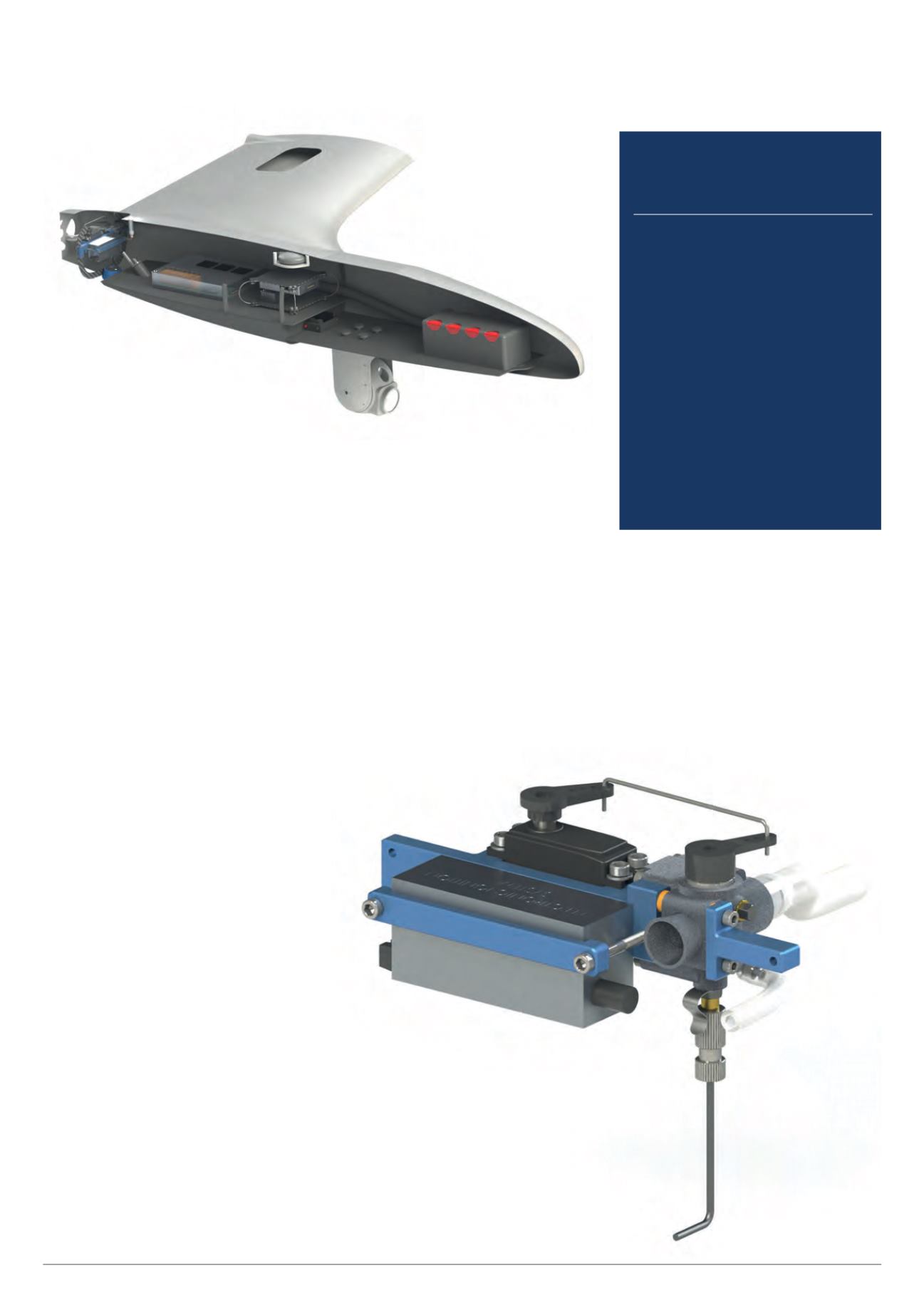

30
Dossier
|
Alti Transition
focus here is on the aircraft platform, not
payloads and data so much. We want to
create an open platform that can be used
for different missions by different clients
and operators who can take the base
system, add what they require and operate
as needed.”
One client who took an early interest
in the Alti Transition project wants a link
with a range of 50 km. “So we have
been working with a couple of different
suppliers of the hardware, along with
Horus, to provide at least a 50 km
encrypted data link and video link as
well,” de Villiers says.
“For longer ranges well beyond 50 km
we are looking at 3G/4G options, but for
now, for initial development and launch,
we want to keep things fairly simple,” he
adds. “Right now we are just keeping a
straight direct line-of-sight link with GCSs
and antenna trackers. Again, the client
always has the option to add whatever
they want on top of that.”
Flight test progress
The flight test programme is in its mid-
to-final stages and is inevitably more
complicated than those for either pure
rotorcraft or fixed-wing designs as it has
to cover rotor- and wing-borne regimes
and the transitional areas between. Tests
of the full-sized aircraft have focused on
hovering, with wing-borne flight initially
investigated with the sub-scale prototype.
De Villiers says, “We’ve done quite a
lot of hover testing, fine-tuning the PIDs.
Obviously it’s a fairly large aircraft in a
multi-copter format and it has a lot of
momentum so it’s very important for us
to get the PIDs and algorithms for hover
mode stabilisation spot-on so that when
we transition to fixed-wing flight, if the
centre of gravity is off in a fixed-wing
sense we know the multi-copter side can
handle anything it throws at it.”
When we spoke to de Villiers, the
team was about to move on to fixed-
wing flights with the full-scale prototype,
following a successful campaign with the
smaller one. The software code has been
through several beta versions and the
airframe has been cleared for testing.
While it is too soon to say whether any
changes will be made as a result of the
June/July 2016 |
Unmanned Systems Technology
Airframe:
in-house
Airframe design consultancy:
Carbonix
Composite materials:
SGL Group
and Lavender Composites
Petrol engine:
Saito
Electric motors:
T-Motor
Rotors:
T-Motor
Autopilot:
ETH Zurich
Ground control system hardware:
Horus
Ground control system software:
ETH Zurich
Key suppliers
to the Alti Transition
The fuselage with (from right to left) battery tray, sensor gimbal, avionics, rear bulkhead
with carburettor and ignition assembly. Underneath is the integral fuel tank
This CAD rendering shows the custom
carburettor assembly with ignition module,
throttle servo and connections. Details are
likely to change in the production aircraft









